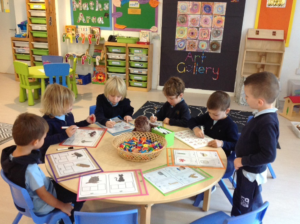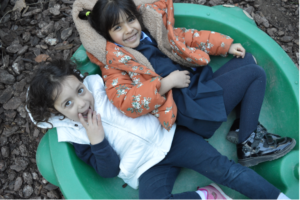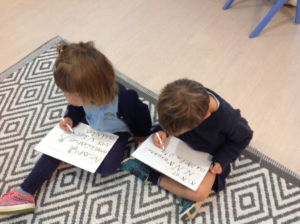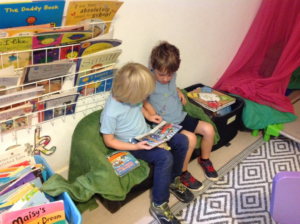4 Reasons Why Mixed Age Learning Works
Olivia Hughes
As you are aware, our Saplings children range from 3 to 5 years of age. In order to ensure that all of our learners are being supported, stimulated and challenged, we split the children into small, personalised groups for Adult Led learning activities. These are short, active sessions spread across the day. Our mixed-age setting provides our children with the time they need to explore the environment at their own pace. We believe that mixed-age learning has a wonderful impact on all of our learners and provides multiple benefits which our children carry with them for life. There are four benefits in particular:
1. Children Learn Leadership Skills
Mixed-age learning is very beneficial for social learning. It gives our older children the opportunity to support our younger children. Our older saplings naturally feel a responsibility to take care of the younger saplings. As role models, they demonstrate things to our younger children directly or by example. After a while, the older saplings see that the younger children are receptive to their example and it gives them a sense of pride and obligation. This, in turn, reinforces the leadership skills they have been demonstrating. The younger children learn by example. They are absorbing information about social cues and behaviour, and very soon they will put them into practice themselves. Positive reinforcement and empathy is a huge benefit in this type of learning environment.
3. More Opportunities for Development
A class of children of the same age is at a similar stage of emotional, physical, social and cognitive development. When there are older and younger children together in a class, children are able to figure out how to problem-solve by watching other children interact and by receiving help from other children directly. Every child has the opportunity to shine depending on his or her strengths. Everyone looks to the child who is more physically coordinated when they want to figure out an obstacle course, or to the most mature child when an argument arises. Mixed-age grouping is a microcosm of the real world. Children in a mixed age setting start to develop skills that carry over into their future learning. This year, I have witnessed incredible progression in language development; surrounded by older saplings, some of our youngest learners have progressed from speaking only a few words of English to forming extensive sentences, asking and answering questions, expressing their emotions and sharing opinions. This has been wonderful to see!
3. More Opportunities for Development
A class of children of the same age is at a similar stage of emotional, physical, social and cognitive development. When there are older and younger children together in a class, children are able to figure out how to problem-solve by watching other children interact and by receiving help from other children directly. Every child has the opportunity to shine depending on his or her strengths. Everyone looks to the child who is more physically coordinated when they want to figure out an obstacle course, or to the most mature child when an argument arises. Mixed-age grouping is a microcosm of the real world. Children in a mixed age setting start to develop skills that carry over into their future learning. This year, I have witnessed incredible progression in language development; surrounded by older saplings, some of our youngest learners have progressed from speaking only a few words of English to forming extensive sentences, asking and answering questions, expressing their emotions and sharing opinions. This has been wonderful to see!






